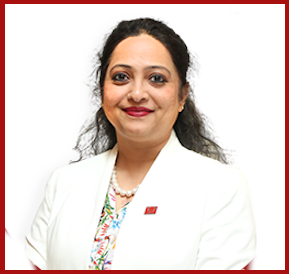International students in academic institutions do not only boost the campus population but their presence is also instrumental in nurturing some of the most important values in the youth. With diverse student demographics enhanced by foreign learners, we open more opportunities to promote equity and inclusiveness.
As local students interact with students from other nations, their awareness of different cultures is enhanced. And if respect for diversity is properly established by institutions in their respective communities, the locals will begin to realize the beauty of other cultures and become more accepting of people of different colors, different races, and unique backgrounds.
Higher Education Institutions (HEIs) are the key to making this a reality within the academic community.
Key Takeaways:
- Higher Education Institutions can begin eliminating prejudice in their students by revising their curricula
- Showcasing the greatness of minority groups in academic materials and activities help make the student population more accepting of other cultures
- Community partnerships with migrant groups can also aid in promoting a more open-minded and culturally aware student community
Role of Institutions
Schools shape the minds of our youth and the things they learn from their studies have long-lasting effects on their lives. Apart from the technical knowledge that students get from the institutions, the values they learn throughout their stay in the institutions will serve our society in many different ways.
One belief system that we need to inculcate among our students is the concept of diversity. Now, more than ever, we need to reinforce respect for diversity and promote inclusiveness in our campuses, and we can do this if we will use our programs to integrate concepts and practices intended to remove racial, sexual, and even religious biases.
One way of doing this is to adjust some of our approaches to our curriculums and implement changes to our programs that will strengthen concepts of equality and diversity. Some initiatives we can implement are the following:
1. Revising the curricula
We need to ensure that there is no room for social and racial inequalities in our courses and curricula. This necessitates a critical assessment of the core objectives of individual academic fields and an examination of the concepts that guide disciplines.
This task requires that faculty members meticulously review learning materials and identify whether they contain concepts that encourage racial injustice. Academicians need to examine established paradigms and canons and identify racial undertones in writings, productions, art, and other works.
Faculty members must actively internationalize their courses and materials. Non-Western approaches also need to become part of our education. We must bear in mind that HEIs have lots of international students coming from diverse cultural and racial backgrounds.
2. Intensifying minoritized voices
The diversification of institutions can be done by not allowing the student community to overlook particular minority groups. But aside from ensuring that campuses are diverse, we need to showcase the prowess of other cultures and races and let it be integrated into disciplines, including in coursework, conferences, and other academic spaces.
This cannot be mere subtle inclusion for the sake of just being in the system. This requires using materials that represent the firsthand experiences of other races and cultures.
3. Integrating high-impact learning activities
High-impact learning activities engage students on a personal level. With these activities, students are required to use critical thinking and analytical skills as they immerse themselves in hands-on exercises. Such activities permit students to distinguish the historical biases that remain present in research, development, practices, programs, and policies. This will also allow students to better comprehend the effects of systemic racism, racial disparities, and injustice.
As students engage with materials more holistically, they become better equipped to confront social problems.
4. Organizing community partnerships
Community partnerships allow students to engage with academic concepts in real-world settings. Schools can collaborate with agencies that work with historically underprivileged populations, assisting victims of injustice, and reintegrating marginalized populations.
This is the perfect opportunity to connect students with advocates. Through this, students can gain an array of tangible learning opportunities and, at the same time, communities and agencies receive their needed support.
International students
Given that a huge portion of international students worldwide is from Asia, xenophobic words and deeds exacerbate fear in them and intensify feelings that some top destinations are no longer safe for them. And so, to ease these anxieties, we need to help our international students feel safe again as they continue to pursue education overseas.
The academe can also bank on the fact that having foreign learners on our campuses can help remove biases as they personify the very concept of diversity. Local students get exposed to other cultures by better knowing their co-learners from other parts of the world. Although the majority of international students do not stay in the host country after graduation, these students often establish connections among the locals and this benefits the community as a whole for the long term.
Conclusion: A More Inclusive Education System
As education becomes more and more global as the years go by, we in the international education sector must ensure that courses and curricula are highly inclusive. The fact is that students of all backgrounds will truly benefit from ethical and inclusive teaching.
The good news is that many have already begun this initiative. However, it is high time for us to reach the masses to put an end to an alarming growing culture of hate that we currently see around us. Students deserve the opportunity to think critically about the world around them and our job is to give them the tools they need to make the world a better place.
More than academic excellence or high-quality education, our gift to the world is humanity. If we promote a more inclusive education system, not only will host countries benefit but international students will bring the values back to their homeland. Let’s become the catalyst of great societies where hatred and bias have no place. (SUNEETHA QURESHI)
#PartnerForLife #InternationalEducation #InternationalStudents #MSM #GlobalEducationForAll
Suneetha has more than 10 years of experience in the international education sector. As president of MSM GMO, she fortifies its business development outreach globally, particularly in the face of MSM’s foray in edtech-based recruitment via MSM Unify. She preserves the premium, value-adding services provided to each GMO partner institution, including dedicated teams on the ground, agent management, lead generation and inquiry management, application pre-screening, and student and parent support through pioneering pre-departure briefing sessions.
She has an impeccable track record of successfully launching the representative offices in Asia and Africa of many North American and European higher education institutions. Her key strengths include hiring, training, and developing teams as evidenced by the successful results of the dedicated in-country college and university client teams.
Suneetha also has taken the lead in developing several initiatives at MSM, including building robust standard operating procedures, the Rise ‘n Shine team engagement platform, and the organization’s data analytics and audit segments.
References:
Cai, W., & Burch, A. (2021, April 04). Swelling anti-Asian Violence: Who is being Attacked Where. Retrieved April 05, 2021, from https://www.nytimes.com/interactive/2021/04/03/us/anti-asian-attacks.html?smid=fb-nytimes&smtyp=cur&fbclid=IwAR0Eh8_rVaBmBsNIiyco1lLUBCwj_j1nMhxXOOKwN7LzYt0nsiFOe6Emzh4
Fischer, K. (2021, March 31). Global: How International Students’ perception of racism in the u.s. has changed. Retrieved April 03, 2021, from https://www.chronicle.com/newsletter/global/2021-03-31
Kachani, et al. (2021, February 19). 5 Principles as Pathways to Inclusive Teaching. Retrieved April 06, 2021, from https://www.insidehighered.com/advice/2020/02/19/practical-steps-toward-more-inclusive-teaching-opinion
Twyman-Ghoshal, A. (2021, March 29). Strategies for antiracist and decolonized teaching. Retrieved April 03, 2021, from https://www.facultyfocus.com/articles/equality-inclusion-and-diversity/strategies-for-antiracist-and-decolonized-teaching/

